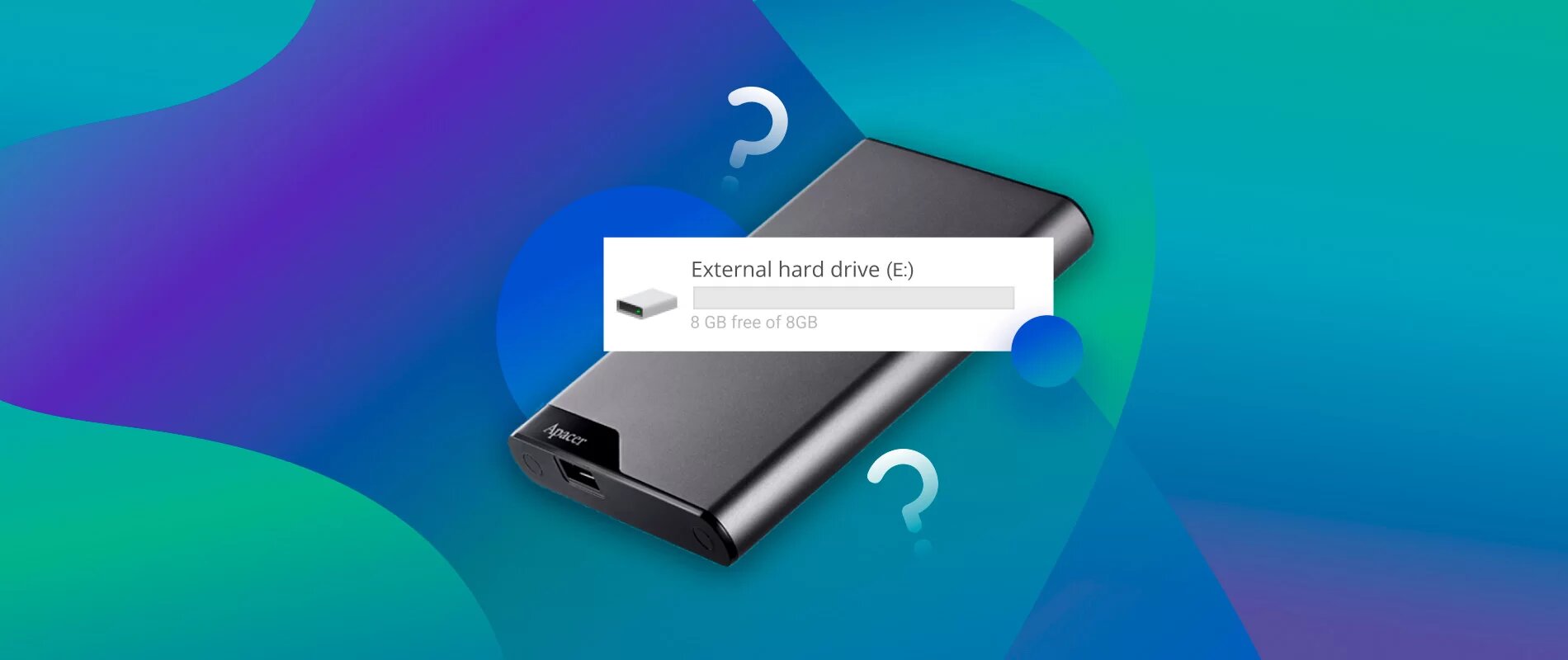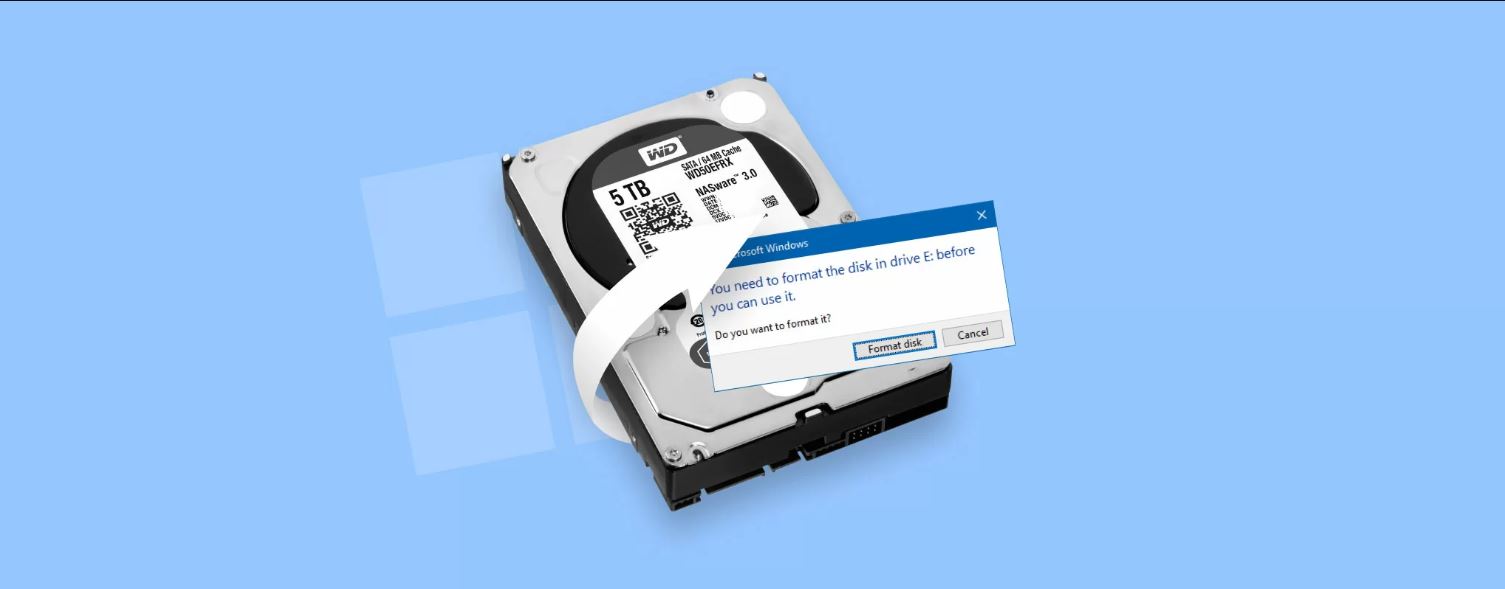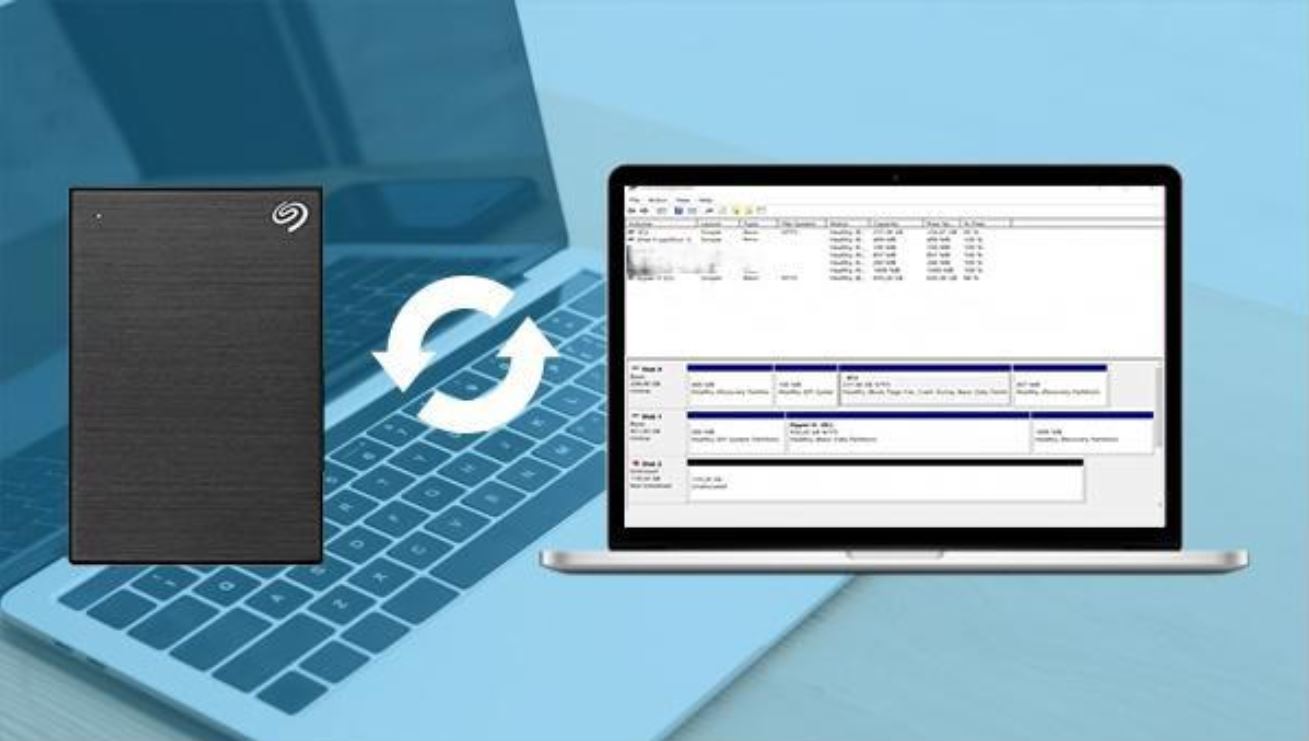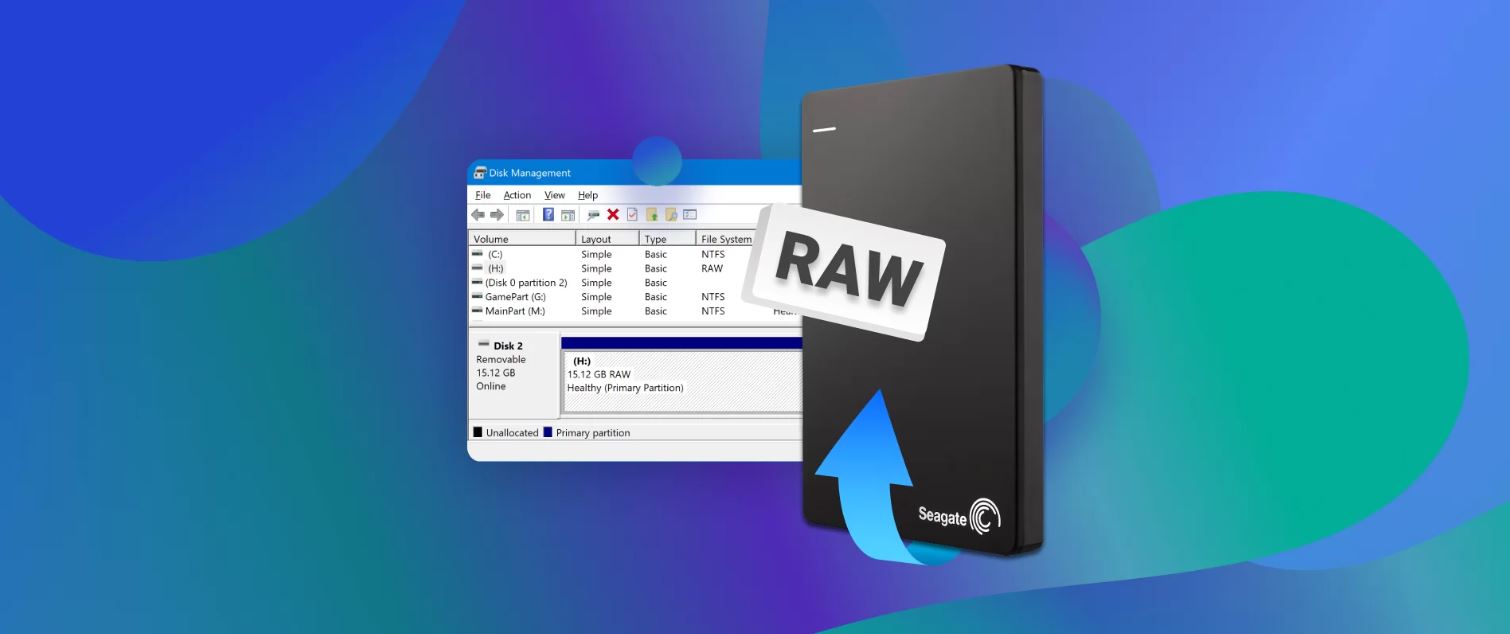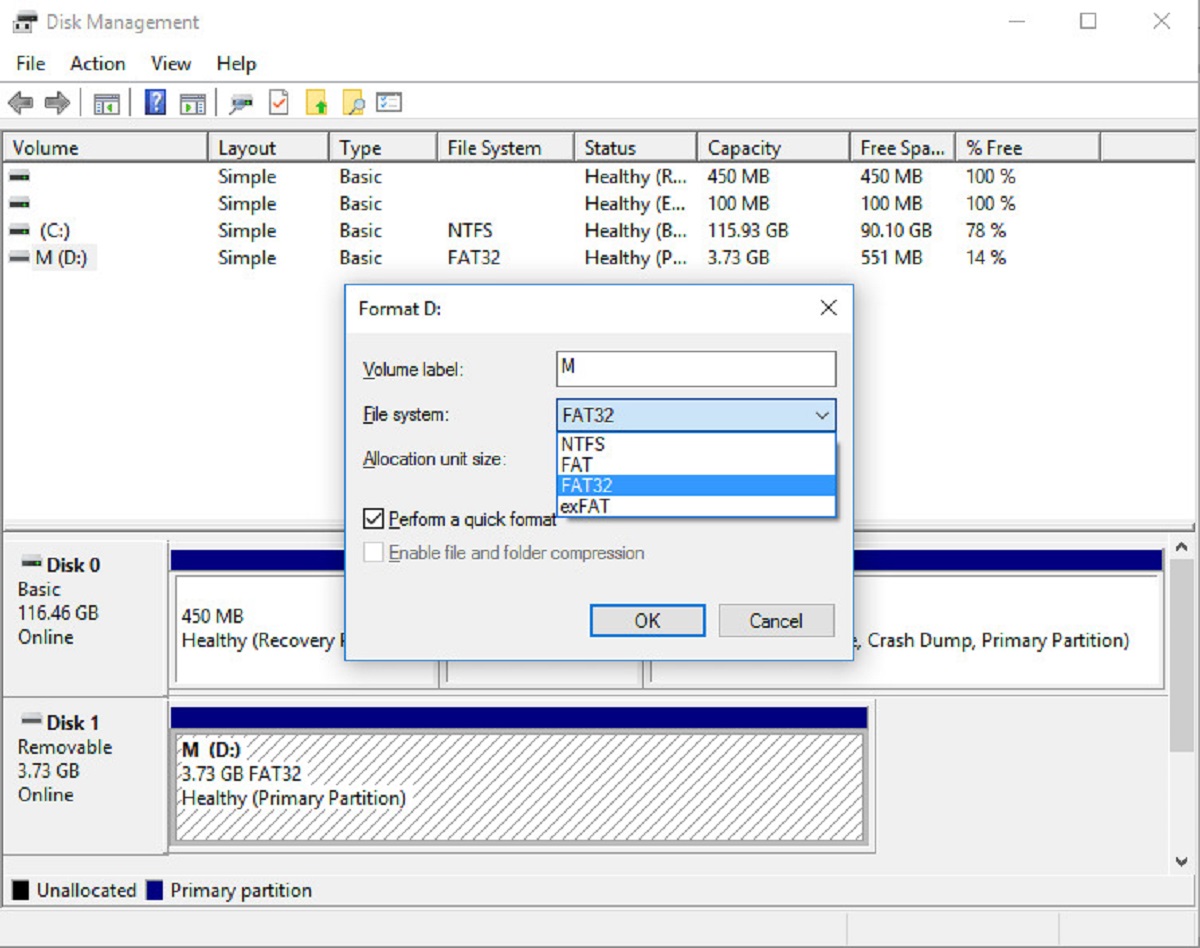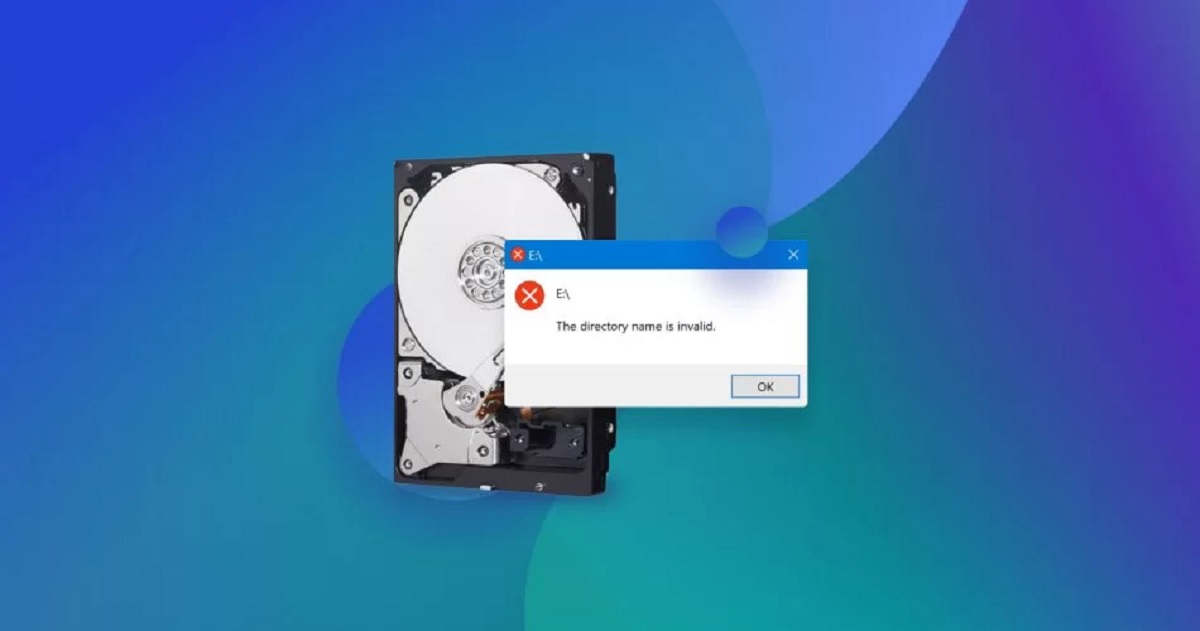Introduction
Have you ever experienced the sinking feeling of realizing that you accidentally formatted your external hard drive and lost all your precious data? It’s a devastating situation that can leave you feeling helpless and frustrated. But don’t despair, there is hope for recovering your formatted external hard drive!
In this article, we will guide you through the process of recovering data from a formatted external hard drive. Whether you accidentally pressed the wrong button or your hard drive became corrupted, we’ll cover the solutions that can help you retrieve your valuable files.
Understanding the nature of formatted external hard drives is the first step to recovery. When you format a drive, all the data stored on it is erased, including files, folders, and even the drive’s file system. However, the actual data is not necessarily completely erased from the drive. Instead, the formatting process typically marks the space occupied by the deleted files as available for overwriting, thus making them seem inaccessible.
There can be several reasons why you may have formatted your external hard drive. It could be a simple human error, where you accidentally clicked on the format option instead of ejecting the drive. Another common scenario is when a virus or malware infection prompts you to format the drive as a security measure. Additionally, an external hard drive may be formatted during the installation of a new operating system or when attempting to resolve disk errors.
Before diving into the data recovery process, it is crucial to take certain precautions to maximize your chances of recovering the lost data. First and foremost, stop using the formatted external hard drive immediately to prevent any new data from overwriting the files you want to restore. Continuing to use the drive can significantly reduce the chances of successful data recovery. It is also recommended to disconnect the drive from your computer or any other device, ensuring that it remains in the same state as when the formatting occurred.
Now that you have a basic understanding of the situation and have taken the necessary precautions, it’s time to explore the available options for recovering data from a formatted external hard drive. In the next sections, we will discuss two primary approaches: using data recovery software and seeking professional data recovery services. Read on to find out which option is best suited for your specific needs.
Understanding formatted external hard drives
Before delving into the process of recovering data from a formatted external hard drive, it’s important to understand what happens when a drive is formatted and how it affects your stored data. When you format a drive, whether it’s a USB thumb drive, an external hard drive, or even an internal hard drive, the formatting process erases all the data stored on the drive and prepares it for storing new information.
However, it’s important to note that formatting a drive doesn’t actually erase the data permanently. Instead, it typically removes the file system that organizes and manages the data on the drive, making the files appear inaccessible. The actual data remains on the drive until it gets overwritten by new data. This means that even though you can’t see or access your files after formatting the drive, it’s still possible to recover them.
External hard drives are commonly used to store backups, important documents, personal files, or media libraries. Accidentally formatting an external hard drive can be a devastating loss, especially if you don’t have a backup. Understanding how formatting works can give you hope in recovering your lost data.
When a drive is formatted, the file system used by the drive gets replaced or reset. The file system, such as NTFS or FAT32, is responsible for organizing and managing the data stored on the drive. Different file systems have different ways of storing and accessing data. By formatting a drive, you essentially change the file system, which alters how the drive interacts with your computer or other devices.
It’s important to note that formatting a drive only affects the file system and metadata of the files, not the actual data itself. The data remains physically intact on the drive until it’s overwritten. This is why data recovery techniques can be effective in retrieving the lost files.
It’s also worth mentioning that formatting a drive does not guarantee complete data erasure. Basic formatting methods don’t securely erase the data, which means that with the right tools and techniques, the files can be recovered. However, it’s important to act quickly and avoid using the formatted drive to prevent new data from overwriting the old files, which can significantly reduce the chances of successful recovery.
In the next sections, we will explore different options for recovering data from a formatted external hard drive. Whether you choose to use data recovery software or seek professional data recovery services, understanding the basic principles of formatted drives will help you in making informed decisions and maximizing your chances of successfully recovering your valuable data.
Common causes of formatting external hard drives
Accidentally formatting an external hard drive is a common occurrence that can happen to anyone. This unfortunate mistake can lead to the loss of important data, leaving you scrambling to find a solution. Understanding the common causes of formatting external hard drives can help you avoid such situations in the future. Let’s explore some of the typical reasons why people end up formatting their external hard drives.
1. Human Error: One of the most common causes of accidental formatting is human error. It’s easy to mistakenly select the wrong drive or click the format option instead of another intended action, such as ejecting the drive. In a moment of haste or distraction, it’s all too easy to make this simple yet costly mistake.
2. Virus or Malware Infection: Another reason for formatting an external hard drive is the presence of a virus or malware infection. When your antivirus software detects a threat on the external drive, it may prompt you to format the drive as a security measure. While this action is meant to protect your system, it can lead you to unintentionally erase all your data.
3. Operating System Installation: During the installation of a new operating system, you may be prompted to format your external hard drive. This is often done to ensure compatibility, create new partitions, or resolve any disk errors. However, it’s important to carefully follow the installation instructions to avoid formatting the wrong drive by mistake.
4. Intentional Formatting: There are instances when you may intentionally format your external hard drive. For example, you may decide to repurpose the drive or erase all its contents to start fresh. It’s crucial to exercise caution and double-check your decision before proceeding, as this action will permanently delete all the data on the drive.
5. Hardware Malfunction: In some cases, hardware malfunctions can trigger the need to format the external hard drive. If the drive becomes corrupted or develops errors, your operating system may prompt you to format it to fix the issues. However, formatting the drive will erase all data, so it’s essential to consider data recovery options before proceeding.
It’s important to note that regardless of the cause, formatting a drive doesn’t necessarily mean that the data is irretrievable. With proper data recovery techniques and tools, you can still recover your lost files. The key is to act quickly, avoid using the formatted drive, and seek the appropriate recovery method based on your specific situation.
In the following sections, we will discuss different options for recovering data from a formatted external hard drive. Whether you choose to use data recovery software or enlist professional data recovery services, understanding the common causes of formatting can help you prevent such accidents and protect your valuable data in the future.
Precautions before attempting recovery
Before embarking on the journey to recover data from your formatted external hard drive, there are several important precautions you should take. These precautions will help maximize the chances of successful data recovery and minimize the risk of further data loss. Let’s explore these essential steps before attempting any recovery process.
1. Stop using the drive: The moment you realize that you have accidentally formatted your external hard drive, it’s crucial to stop using it immediately. Continuing to use the drive can result in new data being written to the disk, potentially overwriting the files you want to recover. By ceasing any further use of the drive, you minimize the risk of permanent data loss and increase the likelihood of successful recovery.
2. Disconnect the drive: To further protect your formatted external hard drive and the data it contains, make sure to disconnect it from your computer or any other device. This prevents any accidental actions or background processes from overwriting the data or causing additional damage to the drive. Keeping the drive in the same state as when the formatting occurred is crucial to the recovery process.
3. Do not format the drive again: It may seem counterintuitive, but formatting the drive again will make it much more challenging to recover your lost data. Formatting the drive a second time will likely lead to more data being overwritten and decrease the chances of successful recovery. Therefore, it’s essential to resist the temptation to format the drive again in an attempt to “fix” the situation.
4. Avoid DIY recovery attempts: While it may be tempting to try DIY data recovery methods you find online, it’s important to exercise caution. Unless you have the necessary knowledge and expertise, attempting DIY data recovery can potentially worsen the situation and render the data unrecoverable. It’s best to leave the recovery process to professional tools or services specialized in data recovery.
5. Keep calm and be patient: Dealing with data loss can be incredibly stressful and emotional. It’s important to stay calm and approach the recovery process with patience. Rome wasn’t built in a day, and data recovery can take time, especially in complex cases. Rushing the recovery process or panicking can lead to hasty decisions that may result in permanent data loss.
By following these precautions before attempting any recovery, you significantly increase the chances of successfully retrieving your lost data. Remember, data recovery is a delicate process, and it’s best to proceed with caution and seek professional help if needed. In the next sections, we will explore two primary recovery options: using data recovery software and seeking professional data recovery services. Each option has its advantages and considerations, so read on to determine the best course of action for your specific situation.
Option 1: Using data recovery software
If you are comfortable taking a do-it-yourself approach to recover data from a formatted external hard drive, using data recovery software can be a viable option. Data recovery software is designed to scan the drive, locate and recover lost or deleted files. Here’s what you need to know about using data recovery software for your formatted external hard drive.
1. Choose reliable data recovery software: There are numerous data recovery software options available in the market. It is crucial to choose a reputable and reliable software that has a track record of successful data recovery from formatted drives. Look for software that specializes in formatted drive recovery and has positive user reviews.
2. Install the software on a separate drive: To avoid overwriting any data on the formatted external hard drive, it is recommended to install the data recovery software on a separate drive or partition. This way, you prevent any risk of the software modifying or writing new data to the drive you are trying to recover from.
3. Connect the formatted external hard drive: Connect your formatted external hard drive to your computer. Ensure that it is recognized and detected by the data recovery software. Make sure not to overwrite any data by avoiding any write operations on the drive.
4. Run a scan with the data recovery software: Start the data recovery software and perform a deep scan or file recovery scan on the formatted external hard drive. The software will analyze the drive and search for any recoverable files and folders. The scanning process may take some time, depending on the size of the drive and the amount of data stored on it.
5. Preview and select the files for recovery: Once the scanning process is complete, the data recovery software will display a list of recoverable files and folders. Take the time to preview the files and select the ones you want to recover. It’s important to note that not all files may be recoverable, especially if they have been overwritten or corrupted during the formatting process.
6. Recover the selected files to a separate location: Choose a different drive or external storage device to recover the selected files. It is essential to avoid recovering the files back to the same formatted external hard drive or partition. By doing so, you prevent potential data overwriting and increase the chances of successful recovery.
Data recovery software can be a cost-effective and convenient option for recovering data from a formatted external hard drive. However, it’s important to note that the success of recovery depends on various factors, such as the extent of formatting, the file system used, and the condition of the drive. If the data recovery software is unable to retrieve your files or if you feel uncomfortable with the process, it may be advisable to seek professional data recovery services.
Now that you are familiar with using data recovery software for your formatted external hard drive, let’s explore the second option: seeking professional data recovery services.
Option 2: Seeking professional data recovery services
If you prefer a more hands-off approach or if you are dealing with a complex or critical data loss situation, seeking professional data recovery services may be the best option for recovering data from your formatted external hard drive. Professional data recovery services have the expertise, tools, and resources necessary to handle complex recovery scenarios. Here’s what you need to know about seeking professional data recovery services.
1. Research reputable data recovery service providers: Start by researching and identifying reputable data recovery service providers. Look for companies with a proven track record in data recovery, especially for formatted drives. Read customer reviews and testimonials to gauge their reliability and success rates.
2. Contact the data recovery service provider: Get in touch with the data recovery service provider to discuss your specific case. Provide them with information about the formatted external hard drive and the circumstances surrounding the formatting. They will ask you questions to assess the extent of the data loss and determine the most suitable course of action.
3. Ship or take your drive to the service provider: Depending on the data recovery service provider’s location, you may need to ship your formatted external hard drive to their facility. Follow their instructions regarding packaging and shipping. Alternatively, if the service provider has a physical location nearby, you can personally take your drive to them.
4. Expert evaluation and diagnostics: Once the data recovery service provider receives your drive, their experts will perform a thorough evaluation and diagnostics to assess the extent of the damage and determine the recovery possibilities. They will examine the drive, its components, and review the formatting process to devise the most effective recovery strategy.
5. Data recovery process: Based on their evaluation, the data recovery experts will utilize specialized tools and techniques to retrieve your data from the formatted external hard drive. They may need to rebuild the drive’s file system, repair any disk errors, or employ other advanced recovery methods to extract the lost files. The process may take time, depending on the complexity of the data loss and the drive’s condition.
6. Secure delivery of recovered data: Once the data recovery process is complete, the service provider will securely deliver the recovered data to you. They may provide the data on a new storage device, such as a USB drive or external hard drive. It is important to carefully follow their instructions for retrieving and accessing the recovered data.
Professional data recovery services offer a higher level of expertise and assistance in recovering data from a formatted external hard drive. They have the necessary tools, cleanroom facilities, and experience to handle complex recovery cases. However, it’s important to note that the cost of professional data recovery services can vary depending on the severity of the data loss and the required recovery techniques.
With the understanding of professional data recovery services, you are now equipped to make an informed decision on the best recovery option for your formatted external hard drive. In the next sections, we will explore the important factors to consider when choosing data recovery software or professional data recovery services.
Important factors to consider in data recovery software or service
When it comes to recovering data from a formatted external hard drive, there are several important factors to consider when choosing between data recovery software or professional data recovery services. These factors can significantly impact the success of your recovery and the overall experience. Let’s explore the key considerations for both options.
1. Recovery success rate: The primary goal of data recovery is to retrieve as much lost data as possible. When evaluating data recovery software or services, consider their success rates in recovering data from formatted drives. Look for solutions or providers with a high track record of success, as this indicates their effectiveness in dealing with complex recovery scenarios.
2. Supported file systems and formats: Ensure that the data recovery software or service supports the file systems and formats used on your formatted external hard drive. Different file systems, such as NTFS, FAT32, or exFAT, may require specific recovery approaches. It’s important to choose a solution that is compatible with your drive’s file system to maximize the chances of recovery.
3. Ease of use: If you decide to go with data recovery software, consider its user-friendliness. Look for software with an intuitive interface that guides you through the recovery process. Clear instructions, a simple interface, and user-friendly features can make the recovery process smoother and more accessible, even for those without technical expertise.
4. Time and effort: Assess the time and effort required for recovery. Data recovery software typically allows you to perform the recovery at your convenience, while professional data recovery services require you to ship or take your drive to their facility. Consider your time constraints, technical skills, and willingness to invest effort in the recovery process when deciding between the two options.
5. Data privacy and security: Data privacy and security are crucial factors to consider. When using data recovery software, ensure that the vendor has robust data protection measures in place to safeguard your recovered data. With professional data recovery services, look for providers that adhere to strict confidentiality protocols and have secure facilities to protect your sensitive information.
6. Cost and budget: Cost is a significant consideration in data recovery. Evaluate the cost-effectiveness of the data recovery software or service in relation to the value of the lost data. Data recovery software is generally more affordable, but its success may vary depending on the severity of the data loss. Professional data recovery services tend to be more expensive but offer specialized expertise for challenging recovery cases.
Take these factors into account when deciding between data recovery software or professional data recovery services. Consider your specific requirements, the nature of the data loss, and your budget to determine the best option for recovering data from your formatted external hard drive.
In the following sections, we will provide step-by-step guides for utilizing data recovery software and engaging professional data recovery services to help you in your recovery journey.
Step-by-step guide for data recovery software
If you’ve chosen to recover data from your formatted external hard drive using data recovery software, here is a step-by-step guide to help you through the process:
- Choose reliable data recovery software: Research and select a reputable data recovery software that specializes in formatted drive recovery. Make sure it is compatible with your operating system and supports the file system used on your formatted external hard drive.
- Install the software on a separate drive: Download and install the data recovery software on a separate drive or partition to avoid overwriting any data on the formatted external hard drive.
- Connect the formatted external hard drive: Plug in the formatted external hard drive to your computer without making any modifications or attempting to access the drive directly.
- Run the data recovery software: Launch the data recovery software and select the appropriate recovery option or mode, typically designed for formatted drive recovery.
- Select the formatted external hard drive: Choose the formatted external hard drive as the target drive for the data recovery software to scan and retrieve the lost files from.
- Begin the scanning process: Initiate the scanning process, which may take some time depending on the size of the drive and the amount of data stored on it. The software will scan the drive and identify recoverable files and folders.
- Preview and select files for recovery: Once the scan is complete, the data recovery software will present a list of recoverable files and folders. Take your time to preview the files to ensure they are intact and select the ones you want to recover.
- Choose the recovery location: Select a different drive or external storage device as the destination for the recovered files. Avoid saving the recovered data back to the formatted external hard drive to prevent overwriting any existing data.
- Recover the selected files: Initiate the recovery process, and the software will transfer the selected files to the designated recovery location. Allow the software to complete the recovery, which may take some time depending on the size and number of files being recovered.
- Verify the recovered files: Once the recovery process is complete, verify the recovered files in the designated recovery location. Ensure that the files are accessible and intact.
It’s important to note that the success of data recovery using software depends on various factors, such as the extent of formatting, the file system used, and the condition of the drive. If the software isn’t able to retrieve your files or if you encounter any challenges during the recovery process, it may be advisable to seek professional data recovery services for further assistance.
In the next section, we will provide a step-by-step guide for engaging professional data recovery services to recover data from your formatted external hard drive.
Step-by-step guide for professional data recovery service
If you have decided to opt for professional data recovery services to retrieve data from your formatted external hard drive, follow this step-by-step guide:
- Research reputable data recovery service providers: Conduct a thorough research to identify reputable data recovery service providers. Look for companies with a proven track record in formatted drive recovery. Read reviews, testimonials, and compare their services before making a decision.
- Contact the data recovery service provider: Get in touch with the chosen data recovery service provider and provide them with information about your formatted external hard drive. Describe your situation and any relevant details to help them assess the extent of the data loss.
- Ship or take your drive to the service provider: Follow the instructions provided by the data recovery service provider to ship your formatted external hard drive to their facility. If the service provider has a physical location nearby, you can personally take your drive to them.
- Expert evaluation and diagnostics: Once the data recovery service provider receives your drive, their experts will perform a thorough evaluation and diagnostics. They will assess the extent of the damage, evaluate the feasibility of recovery, and determine the best course of action.
- Data recovery process: Based on their evaluation, the data recovery experts will employ specialized tools and techniques to recover your data from the formatted external hard drive. They may rebuild the file system, repair any disk errors, or use other advanced recovery methods to extract your lost files.
- Progress updates and communication: Throughout the recovery process, the data recovery service provider should provide you with updates and maintain clear communication. They will inform you about the progress, any challenges encountered, and the estimated time for data recovery completion.
- Receive the recovered data: Once the data recovery process is complete, the service provider will securely deliver the recovered data to you. This may involve transferring the data onto a new storage device or uploading the data to a secure server for download.
- Verify the recovered data: Take the time to verify the recovered data to ensure its integrity and accessibility. If you encounter any issues or missing files, communicate with the data recovery service provider promptly.
- Store the recovered data: Once you have confirmed the successful recovery of your data, store it in a safe location. Create backup copies to prevent any potential loss in the future.
By following this step-by-step guide and engaging professional data recovery services, you benefit from their expertise, advanced tools, and extensive knowledge in recovering data from formatted external hard drives. It is essential to choose a reputable and reliable service provider to ensure the best chance of successful data recovery.
In the next section, we will share additional tips for a successful data recovery process, regardless of whether you opt for data recovery software or professional services.
Additional tips for successful data recovery
When it comes to recovering data from a formatted external hard drive, there are some additional tips that can help increase the chances of a successful recovery. Whether you are using data recovery software or professional data recovery services, consider the following tips:
1. Act quickly: Time plays a crucial role in data recovery. The longer you wait to initiate the recovery process, the higher the risk of the deleted data being overwritten. It’s important to act quickly and start the recovery as soon as possible to maximize the chances of retrieving your files.
2. Avoid unnecessary operations: Any unnecessary operations or modifications to the formatted external hard drive can potentially overwrite the lost data. Avoid formatting, partitioning, or trying to access the drive directly. Keep the drive in the same state as when the formatting occurred to maintain the integrity of the data.
3. Do not attempt DIY repairs: If your formatted external hard drive is physically damaged or not functioning properly, it is strongly advised not to attempt any DIY repairs. Opening the drive or tampering with its components can lead to further damage and make data recovery more challenging or even impossible.
4. Keep the drive in a safe environment: Store the formatted external hard drive in a safe and secure environment while you explore data recovery options. Protect it from physical damage, extreme temperatures, and exposure to moisture or dust that could further compromise its condition.
5. Backup recovered data: Once you have successfully recovered the data from your formatted external hard drive, it is crucial to create backups of the recovered files. This ensures that you have an additional copy in case of any future data loss or accidental formatting.
6. Consider data encryption: If your formatted external hard drive contained sensitive or confidential data, consider encrypting the recovered files to ensure their security. Encryption adds an additional layer of protection and prevents unauthorized access to your recovered data.
7. Implement data backup strategies: To avoid future data loss incidents, implement regular data backup strategies. Utilize external hard drives, cloud storage, or other backup solutions to create duplicates of your important files. This way, even if your drive gets formatted again, you can easily restore the data from your backups.
By following these additional tips, you can enhance the effectiveness of the data recovery process and increase the chances of successfully retrieving your lost files. Remember to choose the appropriate recovery method that aligns with your technical capabilities and the severity of the data loss. Whether you opt for data recovery software or professional services, the most important thing is to act quickly and avoid further data overwriting or damage to your formatted external hard drive.
Preventing data loss in the future
Experiencing data loss from a formatted external hard drive can be a stressful and frustrating ordeal. To avoid facing such a situation again in the future, it is important to implement preventive measures. By following these recommendations, you can significantly reduce the risk of data loss and ensure the security and integrity of your valuable files.
1. Regularly backup your data: Make it a habit to regularly back up your important files to a separate storage device or cloud backup service. This way, even if you accidentally format your external hard drive or experience any data loss incident, you will have a copy of your files readily available for recovery.
2. Ensure data redundancy: Consider implementing a data redundancy strategy, such as using RAID arrays or mirrored backups. These techniques involve creating multiple copies of your data across different drives or devices, minimizing the risk of complete data loss in the event of hardware failure or formatting.
3. Be cautious with formatting: Exercise caution when formatting any storage device, including external hard drives. Double-check the drive you are formatting and ensure that you have a backup of any important data before proceeding. By taking a few extra moments to double-check, you can prevent accidental formatting and subsequent data loss.
4. Protect against malware: Use reputable antivirus software and keep it up to date to protect your system and external storage devices from malware infections. Regularly scan your external hard drives to detect and remove any potential threats that could lead to data loss or corruption.
5. Handle external hard drives with care: Treat your external hard drives with care to avoid physical damage that could result in data loss. Avoid dropping or exposing them to extreme temperatures, moisture, or other hazardous conditions. Properly eject the drive from your computer before disconnecting it to prevent any data corruption.
6. Monitor drive health: Keep an eye on the health and status of your external hard drives. Utilize SMART (Self-Monitoring, Analysis, and Reporting Technology) tools or disk utility software to check for any signs of potential failure. Early detection of issues can help you take preventive measures or seek professional assistance before data loss occurs.
7. Stay updated: Regularly update your operating system, software applications, and firmware for your external hard drives. These updates often include bug fixes, security patches, and improvements that can help mitigate potential risks and vulnerabilities.
By incorporating these proactive measures into your data management practices, you can minimize the risk of future data loss incidents. Remember, prevention is always better than cure, and investing time and effort in preventive measures can save you from the stress and frustration of data loss.
Now that you have learned about preventing data loss in the future, let’s conclude this guide to recovering data from a formatted external hard drive.
Conclusion
Experiencing the loss of data due to formatting your external hard drive can be a distressing and overwhelming situation. However, in this guide, we have explored various options and steps to help you in recovering your valuable files.
Whether you choose to use data recovery software or seek professional data recovery services, it is important to understand the nature of formatted external hard drives and take necessary precautions before attempting any recovery process. Acting quickly, avoiding further modifications to the drive, and considering factors such as success rates, supported file systems, ease of use, time, cost, and data privacy are key factors in making an informed decision.
If you decide to go for data recovery software, following a step-by-step guide, such as choosing reliable software, connecting the formatted external hard drive, running the software, selecting and recovering files, can help you navigate the process smoothly. On the other hand, opting for professional data recovery services entails researching reputable providers, shipping or taking your drive to their facility, expert evaluation and diagnostics, and receiving the recovered data from their experts.
Additionally, we have provided tips for a successful data recovery process, emphasized the importance of preventing future data loss through regular backups, cautious formatting practices, malware protection, proper handling of external hard drives, monitoring drive health, and staying updated with software and firmware updates.
By arming yourself with the right knowledge and taking the necessary precautions, you can increase the chances of recovering your lost data and prevent data loss incidents in the future. Remember that every data loss situation is unique, and professional assistance should be sought if needed.
With this comprehensive guide, we hope you feel more equipped and confident in your ability to recover data from a formatted external hard drive. Remember to remain calm, act promptly, and prioritize data backup and preventive measures to safeguard your valuable files.
Thank you for reading, and best of luck in your data recovery journey!







